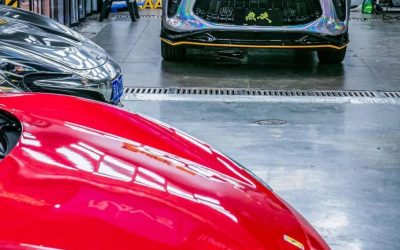The Discrepancy Between Extreme Winter Testing and Real-world Driving Scenarios: Factors Affecting Electric Vehicle Range

Recently, there has been a debate in the automotive industry about the validity of extreme winter testing for new energy vehicles (NEVs), with car manufacturers and institutions questioning the scientific rigor of the testing processes. Some are calling for national-level testing standards to address these concerns. So, what kind of testing would truly convince consumers, and how much significance does extreme winter testing hold as a reference?

Divergent Range Standards and Varied Test Results
Recent winter testing of NEVs from Wey, Bluesky, Jike, BYD, and others has sparked controversy. Industry giants such as Great Wall, Geely, Kia, and Huawei have raised doubts about the scientific nature of extreme testing procedures, claiming that the results could mislead consumers. The question arises: How much of the extreme testing serves as a meaningful reference for consumers when considering purchasing an electric vehicle?
China’s NEV usage scenarios in winter are notably complex, with a vast geographical span. As a result, range becomes a somewhat enigmatic topic. Currently, there are three main standards for evaluating range: NEDC, CLTC, and WLTC.
- NEDC (New European Driving Cycle): Previously used for NEV range testing in China, NEDC is considered overly idealized and not very indicative of real-world conditions. It focuses on typical European road environments, featuring short testing durations, limited mileage, low speeds, and minimal gear shifts. It doesn’t adequately consider the impact of environmental temperature on energy consumption or account for the start-stop conditions in urban traffic congestion.
- CLTC (China Light-duty Vehicle Test Cycle): Introduced by the Ministry of Industry and Information Technology, CLTC is part of China’s vehicle driving cycle standards (GB/T 38146.1-2019). It covers a broader range and is more comprehensive, reflecting driving conditions in Chinese cities. However, it tends to prioritize urban driving scenarios and overlooks energy consumption variations in different environments, such as high-speed driving.
- WLTC (Worldwide Harmonised Light Vehicles Test Procedure): A global standard introduced in 2016, WLTC considers typical road conditions worldwide and is more reflective of real driving conditions. Although an improvement over NEDC, it still lacks specific considerations for extreme conditions, such as temperature and humidity.
In summary, there is a lack of comprehensive and scientific testing standards for NEVs, both internationally and domestically. Even existing national standards serve as more of a laboratory-level reference. Consequently, various organizations have developed their own testing standards to evaluate range, raising questions about their relevance to mainstream consumer usage scenarios.
Multiple Factors Influencing Testing Range
Several factors contribute to the significant impact of temperature on range during extreme winter testing. Unfortunately, there is no revolutionary solution to these challenges at present.
- Temperature Effects on Battery Activity: Prolonged exposure to low temperatures reduces the activity of battery materials, affecting the speed of chemical reactions and leading to decreased battery capacity and range. Studies show that the optimal working temperature for new energy batteries is around 25°C. At -20°C in northern regions, battery degradation can reach 57%, nearly halving the range. Therefore, ensuring the battery is at full capacity during testing is challenging, and results may not accurately reflect real-world conditions.
- Heating Energy Consumption: In winter, especially in northern regions where heating is essential, the use of the vehicle’s heating system contributes significantly to energy consumption. While technologies like air heat pumps have been introduced to mitigate this, they fall short of the warmth provided by traditional internal combustion engine heating systems, impacting range.
- Air Conditioning Impact: In some extreme tests, testers pre-activate air conditioning, heated steering wheels, or heated seats, which increases energy consumption and reduces actual range. Prolonged use of stationary heating or air conditioning can lead to substantial energy drain, resulting in reduced range.
- Driving Habits: Different driving habits among individuals, such as frequent aggressive acceleration and braking, can significantly affect energy consumption and, consequently, the actual range. Smooth driving with gentle acceleration and deceleration tends to have a less drastic impact on range.
Three Driver Perspectives:
For most NEV owners, daily driving conditions are not as harsh as those encountered in testing. The majority of users commute during standard working hours, and outdoor temperatures rarely reach the extremes faced at testing sites like Mohe. Additionally, the average driver does not engage in aggressive driving as seen in some extreme tests. Therefore, extreme testing might not hold significant reference value for NEV owners or potential buyers.
In conclusion, consumers and manufacturers alike await the establishment of authoritative and scientifically sound testing standards that accurately reflect the real-world usage scenarios of NEVs. Such standards would provide meaningful technical benchmarks for new energy vehicles, addressing current challenges related to temperature extremes and usage patterns.











